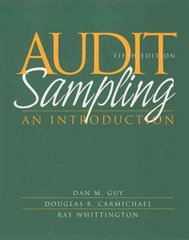Question
PART A Jackson operates a construction company (as the sole owner). Since his company's current projects are all housing contracts, he has the choice of
PART A
Jackson operates a construction company (as the sole owner). Since his company's current projects are all housing contracts, he has the choice of utilizing either the completed contract method (recognizing all income when the project is completed) or the percentage of completion method (recognizing the income in proportion to the percentage of the project completed) for recognizing income. The completed contract method would allow Jackson to defer income recognition. Assuming that Jackson is projected to be in the top marginal tax bracket of 37% (before considering income from the construction company) for current and future years, which income recognition method would Jackson generally prefer? Why?
PART B
Further, assume that Jackson is an accrual-basis taxpayer and he also routinely pays a land clearing service before beginning major construction projects. Under the reoccurring item exception (which would allow him to immediately recognize expenses), he has the option of claiming the expenses either in the next or current year. Assuming that Jackson is projected to be far into the top marginal tax bracket of 37% in current and future years, which option would Jackson generally prefer? Why?
PART C
As a separate endeavor, Jackson has also invested in several undeveloped tracts of land. He hopes that the land will appreciate in value so that he can profit from the real estate when the property is sold. Assuming that the land has appreciated in value, would Jackson prefer to have these land tracts classified as ordinary or capital assets? Why? How would your answer change if the land has depreciated in value? Why?
PART D
Would your responses to Parts A and B be different if future marginal tax rates were expected to increase substantially due to recent tax law changes? Why?
PART E
Are a taxpayer's general objectives when reporting taxable income consistent with his or her objectives when reporting financial (book) income? Why or why not?
Step by Step Solution
There are 3 Steps involved in it
Step: 1

Get Instant Access to Expert-Tailored Solutions
See step-by-step solutions with expert insights and AI powered tools for academic success
Step: 2

Step: 3

Ace Your Homework with AI
Get the answers you need in no time with our AI-driven, step-by-step assistance
Get Started


